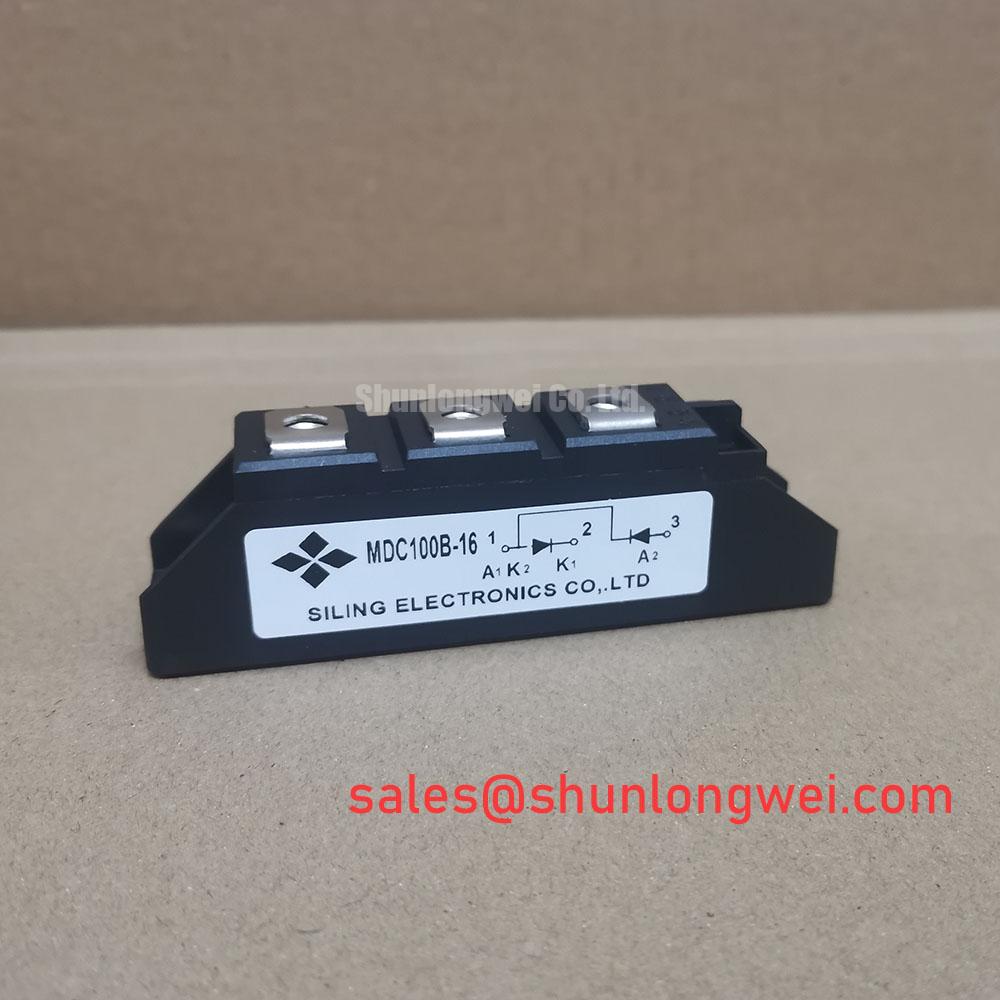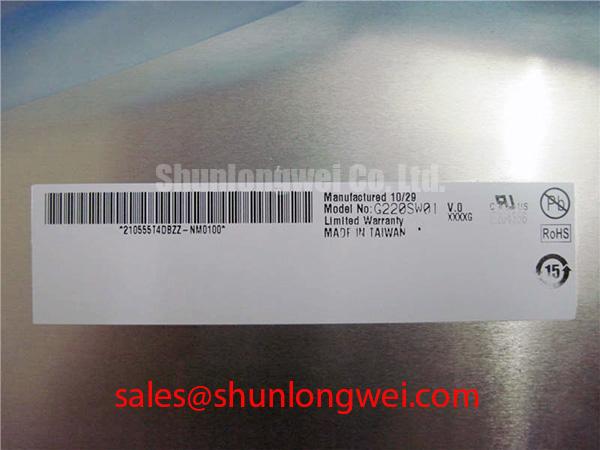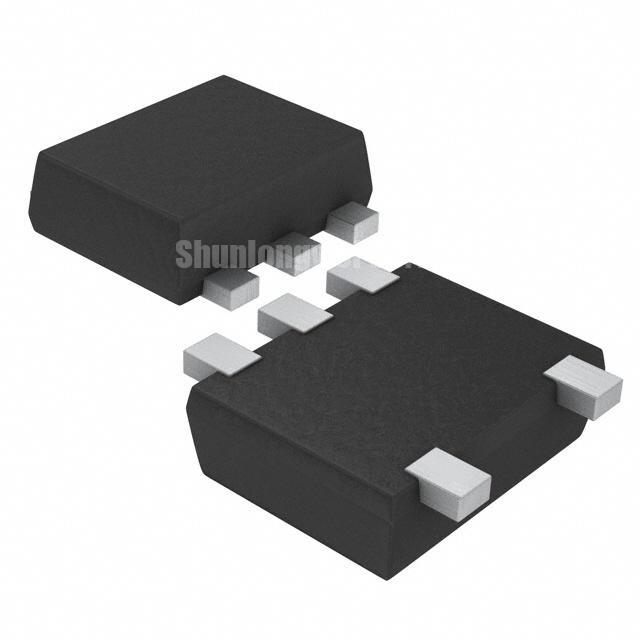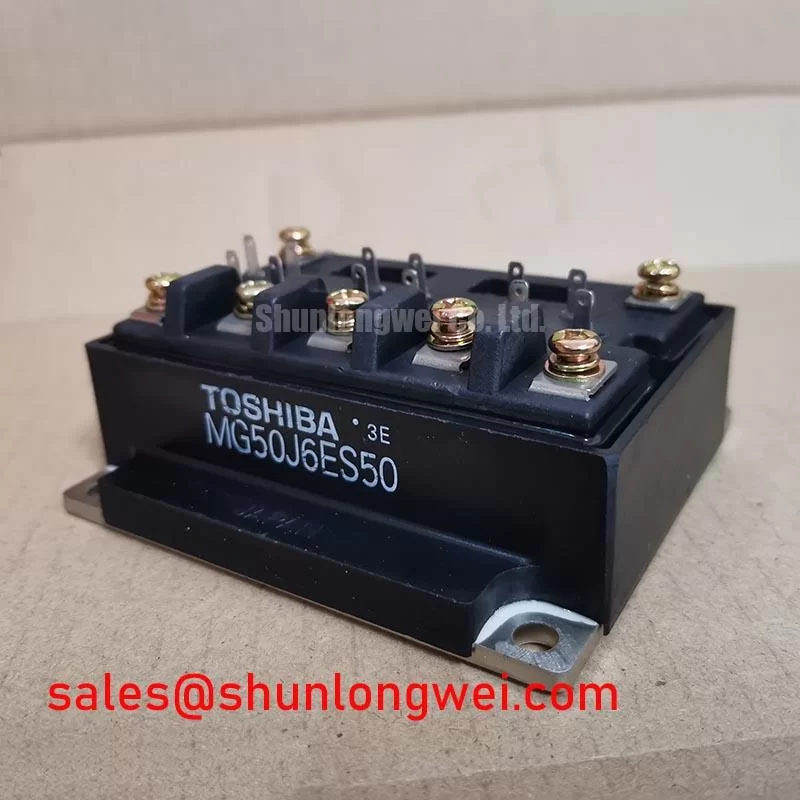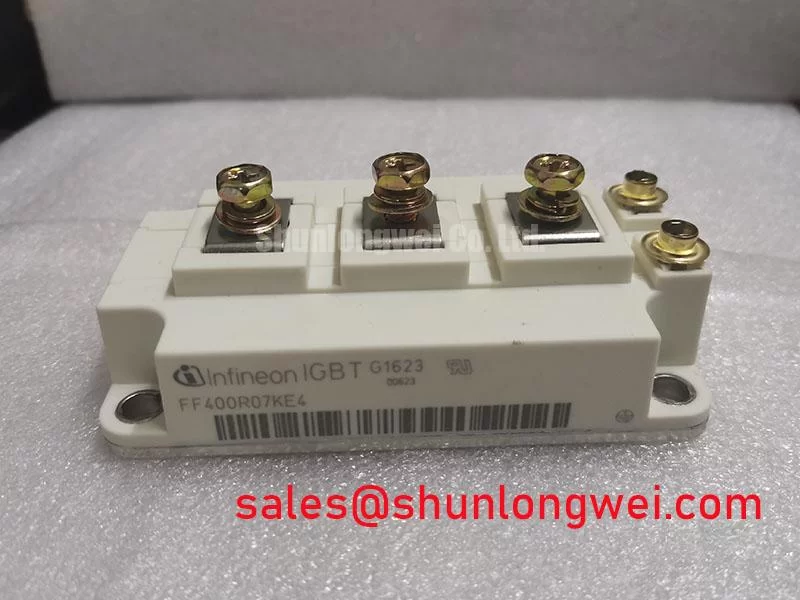MDC100B-16 | Robust 1600V Thyristor-Diode Module for Controlled Rectification
The MDC100B-16 is an engineered power module designed for engineers who require robust, reliable, and precise control over AC-to-DC power conversion. Integrating a high-voltage thyristor and diode in a half-controlled single-phase bridge configuration, this module provides a dependable solution for line-frequency applications where performance and durability are non-negotiable.
Core Features for Demanding Applications
- High Voltage Capability: With a 1600V repetitive peak reverse voltage (VRRM), the MDC100B-16 is ideally suited for direct operation on 400/480VAC lines, providing a substantial safety margin for industrial environments prone to voltage transients.
- Substantial Current Handling: A 100A average forward current (IT(AV)) rating enables its use in mid-power applications ranging from industrial motor control to high-capacity battery charging systems.
- Integrated Topology: The module combines two thyristors and two diodes in a common cathode configuration, simplifying circuit design, reducing assembly time, and minimizing stray inductance compared to discrete component solutions.
- Enhanced Reliability: Featuring glass-passivated chips, the MDC100B-16 offers superior long-term stability and high-temperature performance by protecting the semiconductor junctions from environmental contaminants.
Key Technical Specifications
The following parameters are critical for design engineers evaluating the MDC100B-16 for their power systems. For comprehensive electrical and thermal characteristics, download the official MDC100B-16 datasheet.
| Parameter | Value |
|---|---|
| Repetitive Peak Off-State/Reverse Voltage (VDRM / VRRM) | 1600 V |
| Average On-State Current (IT(AV) @ TC=85°C) | 100 A |
| RMS On-State Current (IT(RMS)) | 157 A |
| Peak On-State Voltage (VTM @ 314A) | 1.6 V |
| Gate Trigger Current (IGT) | < 150 mA |
| Thermal Resistance, Junction to Case (Rth(j-c)) | 0.24 °C/W |
| Operating Junction Temperature (Tj) | -40°C to 125°C |
Application Deep Dive: Where the MDC100B-16 Excels
The true value of a component is revealed in its application. The MDC100B-16's specific design makes it a superior choice for several key industrial systems:
- AC Motor Soft Starters: By precisely controlling the firing angle of the thyristors, this module can gradually ramp up the voltage applied to an AC induction motor. This phase control minimizes mechanical shock and eliminates the high inrush currents that can trip breakers and stress the electrical grid.
- Controlled DC Power Supplies: For applications requiring a variable DC voltage, such as electroplating or large-scale electrolysis, the MDC100B-16 functions as the core of a simple and highly durable controlled rectifier. It provides a more robust and cost-effective alternative to complex switch-mode topologies in low-frequency environments.
- High-Capacity Battery Chargers: Its ability to regulate output power makes it perfect for implementing multi-stage charging algorithms (bulk, absorption, float) for lead-acid or other industrial battery technologies, ensuring optimal charging without damaging the cells.
Expert Engineering FAQs for the MDC100B-16
When is a thyristor-diode module a better choice than a full IGBT-based converter?
A thyristor-diode module like the MDC100B-16 is the optimal solution for line-frequency (50/60 Hz) phase control and rectification. It excels in simplicity, cost-effectiveness, and ruggedness. If your application requires high-frequency switching (kHz range) for high-efficiency, compact designs, such as in a modern Variable Frequency Drive (VFD) or solar inverter, then IGBT modules are necessary. For controlling power from the AC mains without changing the frequency, the thyristor is king.
What is the most critical factor for ensuring the long-term reliability of this module?
Without question, it is thermal management. The module's low thermal resistance is a significant design advantage, but it relies on proper implementation. Ensuring a flat, clean mounting surface, applying the correct mounting torque, and using a high-quality thermal interface material are paramount. Effective heat dissipation directly translates to a longer operational life and the ability to handle surge currents reliably. For further reading, understanding the principles of preventing overtemperature failure is crucial for any power module design.
How does the "half-controlled" bridge topology impact the circuit design?
The half-controlled nature means only two of the four rectifying elements (the thyristors) are controllable, while the other two (the diodes) are not. This simplifies the gate drive circuitry significantly, as only two gate signals are needed. This design is inherently a single-quadrant converter, meaning power flows only from the AC source to the DC load. It cannot perform regenerative braking, a key difference from more complex systems like those used in robotic servo drives. This makes it a focused, efficient solution for unidirectional power flow applications.

